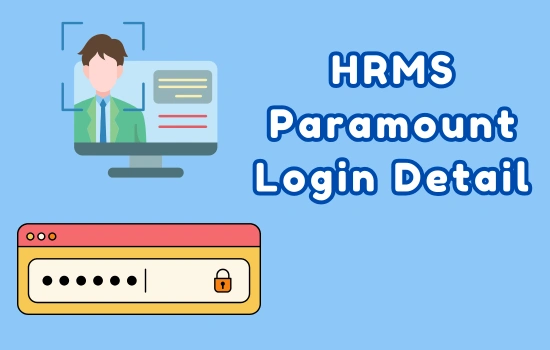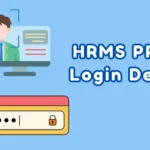In the rapidly evolving world of Human Resource Management Systems (HRMS), employee self-service (ESS) portals have become indispensable tools. These portals empower employees to take control of their HR-related tasks, from updating personal information to accessing payslips and submitting leave requests. HRMS Paramount is one such robust platform that offers a seamless ESS experience for employees. In this article, we provide a comprehensive guide to logging in to the HRMS Paramount Employee Self-Service Portal.
What is the HRMS Paramount Employee Self-Service Portal?

The HRMS Paramount Employee Self-Service Portal is a secure and user-friendly interface that allows employees to interact directly with the HR system. It minimizes the administrative burden on HR teams and gives employees autonomy over their HR-related activities. With features like leave management, timesheets, performance reviews, and document downloads, the portal is an essential tool for a modern workforce.
Why Use the HRMS Paramount ESS Portal?
- Efficiency: Employees can manage their HR tasks without waiting for HR representatives, saving time and streamlining workflows.
- Accessibility: Access HRMS anytime and anywhere with just a device and internet connection.
- Transparency: Employees can easily access important information, such as pay details, tax records, and company policies.
- Data Security: HRMS Paramount uses advanced encryption protocols to ensure the safety of sensitive employee data.
Step-by-Step Guide to Logging in to the HRMS Paramount Portal
Step 1: Access the Login Page
To begin, navigate to the HRMS Paramount portal using your preferred browser. The URL for the portal is typically provided by your organization. If you are unsure about the exact link, check your onboarding documents or contact your HR department.
Step 2: Enter Your Credentials
You will need the following details to log in:
- Username/Employee ID: This is usually provided by HR during onboarding. It could be your email address, employee ID, or a unique username assigned by your organization.
- Password: A temporary password is often assigned initially. Employees are prompted to change this during their first login for security purposes.
Enter these details in the respective fields.
Step 3: Verify Your Identity
For added security, many organizations implement a two-factor authentication (2FA) system. You might need to:
- Enter a one-time password (OTP) sent to your registered mobile number or email.
- Answer a security question set during initial login.
Step 4: Update Your Password (First-Time Users)
If you are logging in for the first time, the system will prompt you to change your password. Follow these guidelines for creating a secure password:
- Use at least 8 characters, including uppercase, lowercase, numbers, and special symbols.
- Avoid using easily guessable information like birthdays or common words.
- Do not share your password with others.
Step 5: Explore the Dashboard
Once logged in, you will be directed to the main dashboard. The layout may vary depending on your organization’s customization, but you can expect to see the following:
- Quick Links: Access frequently used features like payslips, leave requests, and announcements.
- Personal Information: Update your contact details, emergency contacts, and other personal data.
- Leave and Attendance: View your leave balance, apply for leaves, and track attendance records.
- Payroll Details: Download payslips, check tax deductions, and view salary components.
Common Issues and Troubleshooting Tips
- Forgotten Password
- Click on the “Forgot Password” link on the login page.
- Enter your registered email or employee ID to receive a password reset link.
- Follow the instructions in the email to set a new password.
- Account Locked
- After multiple failed login attempts, your account may get locked. Contact your HR or IT department to unlock it.
- Invalid Credentials
- Double-check your username and password for typos.
- Ensure Caps Lock is off and the keyboard language settings are correct.
- Browser Compatibility
- Use updated browsers like Chrome, Edge, or Firefox for the best experience.
- Clear your browser cache and cookies if the portal does not load properly.
- Technical Issues
- Report persistent issues to your organization’s IT support team or HRMS administrator.
Best Practices for Using the HRMS Paramount ESS Portal
- Keep Login Credentials Secure
- Avoid writing down your password in unsecured places.
- Change your password periodically to enhance security.
- Log Out After Use
- Always log out of the portal after use, especially on shared or public devices.
- Update Information Promptly
- Ensure your personal and contact details are always up to date to avoid any disruptions.
- Stay Informed
- Regularly check the portal for company announcements, new policies, or updates.
Conclusion
The HRMS Paramount Employee Self-Service Portal is a powerful tool that simplifies HR processes for employees and organizations alike. By following this login guide and adopting best practices, you can ensure a seamless and secure experience. Embrace the autonomy and convenience of the ESS portal and make the most of its features for an efficient work life.
For any additional support, always feel free to reach out to your HR or IT department.
Hina Abbasi is Editor and a passionate sports and entertainment content writer at WinnersMaze.com. Hina’s expertise spans across a wide range of sports, and interest in many TV shows allowing her to deliver insightful analysis and compelling stories that resonate with readers.

